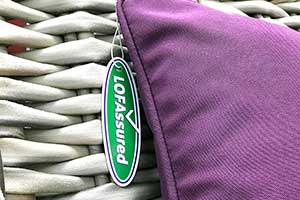From gardening tools to revolutionary new product designs, too often those behind the original design forget to ensure their intellectual property is protected, says Adam Turley, Intellectual Property specialist at Baines Wilson LLP.
The effects of doing so can have tremendous consequences on businesses financially, as well as rendering the benefits of originality virtually invisible. Knowing how to protect and maximise your intellectual property, particularly within the garden trade, ensuring that it is solely you and your team who reap the rewards of your creation, is fundamental.
 Protecting your intellectual property is not just about protecting products or creations, it is about protecting valuable assets too. These assets are not only vital in differentiating you from your competitors, but are an important part of your business’s success. In the worst cases, a lack of intellectual property protection can spell the end of a business, especially in an industry as competitive as gardening where new products come to market on a regular basis and, if the intellectual property behind those products isn’t fully protected, others are quick to spot the potential of a new design and market what could be an infringing product of their own.
Protecting your intellectual property is not just about protecting products or creations, it is about protecting valuable assets too. These assets are not only vital in differentiating you from your competitors, but are an important part of your business’s success. In the worst cases, a lack of intellectual property protection can spell the end of a business, especially in an industry as competitive as gardening where new products come to market on a regular basis and, if the intellectual property behind those products isn’t fully protected, others are quick to spot the potential of a new design and market what could be an infringing product of their own.
It is not unknown for a gardening product to win an award at a trade show, then just a few months later for a similar product to be marketed by a much larger, often overseas, firm. This problem is compounded by the fact that larger firms are often able to take products to market more quickly, and more cheaply, than their smaller counterparts. The original designer then finds themselves lost in the process, unable to compete on price and watching from the side-lines as another company showcases a similar product.
Ensuring others can’t reap the benefits of your hard work
Too often this situation arises as companies or designers don’t do enough to protect their intellectual property at the outset. If you do not register a design or brand and a dispute arises, you will be left having to rely on unregistered rights which are not as strong as those that can be obtained if you registered your rights in the first place.
Added to this is the fact that it is significantly cheaper to resolve intellectual property disputes with registered protection already in place. With the relatively low cost of obtaining registrations it’s therefore surprising that so many fail to adequately protect their intellectual property. Therefore, if you do want to commercialise, it is important to ensure others can’t reap the commercial benefits of your assets by having a robust and proactive strategy for the protection of intellectual property rights in place.
Prevention is always better than cure. Just a comparatively small amount of time and cost on intellectual property protection at the outset of a design project can save significant time and money in the long run. Whether you are working in the gardening industry or beyond, intellectual property protection should be a central part of your business plan, not merely an afterthought.


 Protecting your intellectual property is not just about protecting products or creations, it is about protecting valuable assets too. These assets are not only vital in differentiating you from your competitors, but are an important part of your business’s success. In the worst cases, a lack of intellectual property protection can spell the end of a business, especially in an industry as competitive as gardening where new products come to market on a regular basis and, if the intellectual property behind those products isn’t fully protected, others are quick to spot the potential of a new design and market what could be an infringing product of their own.
Protecting your intellectual property is not just about protecting products or creations, it is about protecting valuable assets too. These assets are not only vital in differentiating you from your competitors, but are an important part of your business’s success. In the worst cases, a lack of intellectual property protection can spell the end of a business, especially in an industry as competitive as gardening where new products come to market on a regular basis and, if the intellectual property behind those products isn’t fully protected, others are quick to spot the potential of a new design and market what could be an infringing product of their own.